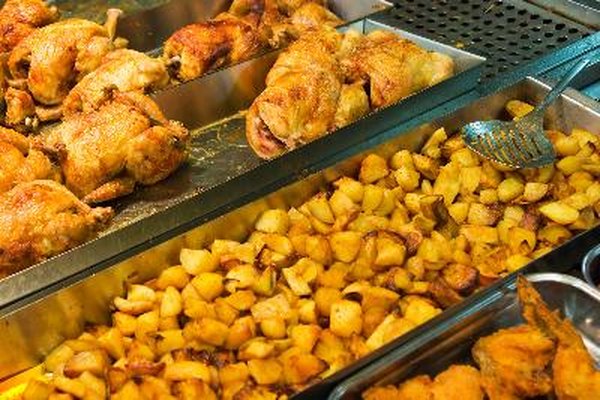How to Calculate the Deduction Value of Donated Food
Guidelines covering the type of foods you can donate and those you can't are stringent.
food image by Dusi Puffi from Fotolia.com
Without the help of individuals, retailers and brokers, food pantries, soup kitchens and food banks would not have the wherewithal to meet the needs of the hungry. From large quantities of surplus goods to small food drives, organizations rely on such gifts, and if you want to be part of this important effort, you should know how to calculate in-kind donations.
Identify food items suitable for donation. You can’t include products that don't meet government and food pantry standards. Forget leftover party trays, defrosted products, cooked food and products with suspect shelf life dates. Contact the nonprofit for a complete list of the food items they will accept for donation.
Step 2Familiarize yourself with Section 2135 of the 1976 Tax Reform Act. The 1976 Tax Reform Act allows donors to include “fair market value” in calculations. Specifically, it states: “The amount of the deduction is determined by the FMV of the property at the time of the contribution. Reg. Sec. 1.170A-1(c)(1).”
Step 3Determine the actual cost of the donated food items, not your purchase price. Ask your grocer, a food distributor or purveyor to obtain an estimate of the actual cost of an item and then double the number. Use this example as your guide: It costs $1 to manufacture a boxed dinner that sells for $4. The $3 profit stores make does not count toward your FMV. Therefore, you can claim two times the cost, or $2 when itemizing the boxed dinner you donated.
Step 4Total the value of your food donations for the tax year using the steps in this article. Fill out IRS Form 1040 Schedule A to itemize your tax deductions. Enter the total amount of donated food and other non-cash related donations on Line 17 of Schedule A. Enter the total amount of all of your Schedule A itemized deductions on Line 40 of IRS Form 1040.
References
Tips
- If your donation is accepted by a food bank, it is covered by the Bill Emerson Good Samaritan Act of 1996. You and your family are thus protected against civil and criminal liability if someone becomes ill as a direct result of your donation.
- All donations over $250 require a receipt from the nonprofit organization. Although you are not required to send copies of your receipts to the IRS with your tax filing, keep the copies in the event of an audit.
- You must fill out and include IRS Form 8283 with your tax filing if your food donation is valued at over $500.
Warnings
- Do not attempt to deduct more than two times the FMV of your donated food. The "two times" limit is the maximum you can deduct.
Writer Bio
Based in Chicago, Gail Cohen has been a professional writer for more than 30 years. She has authored and co-authored 14 books and penned hundreds of articles in consumer and trade publications, including the Illinois-based "Daily Herald" newspaper. Her newest book, "The Christmas Quilt," was published in December 2011.

